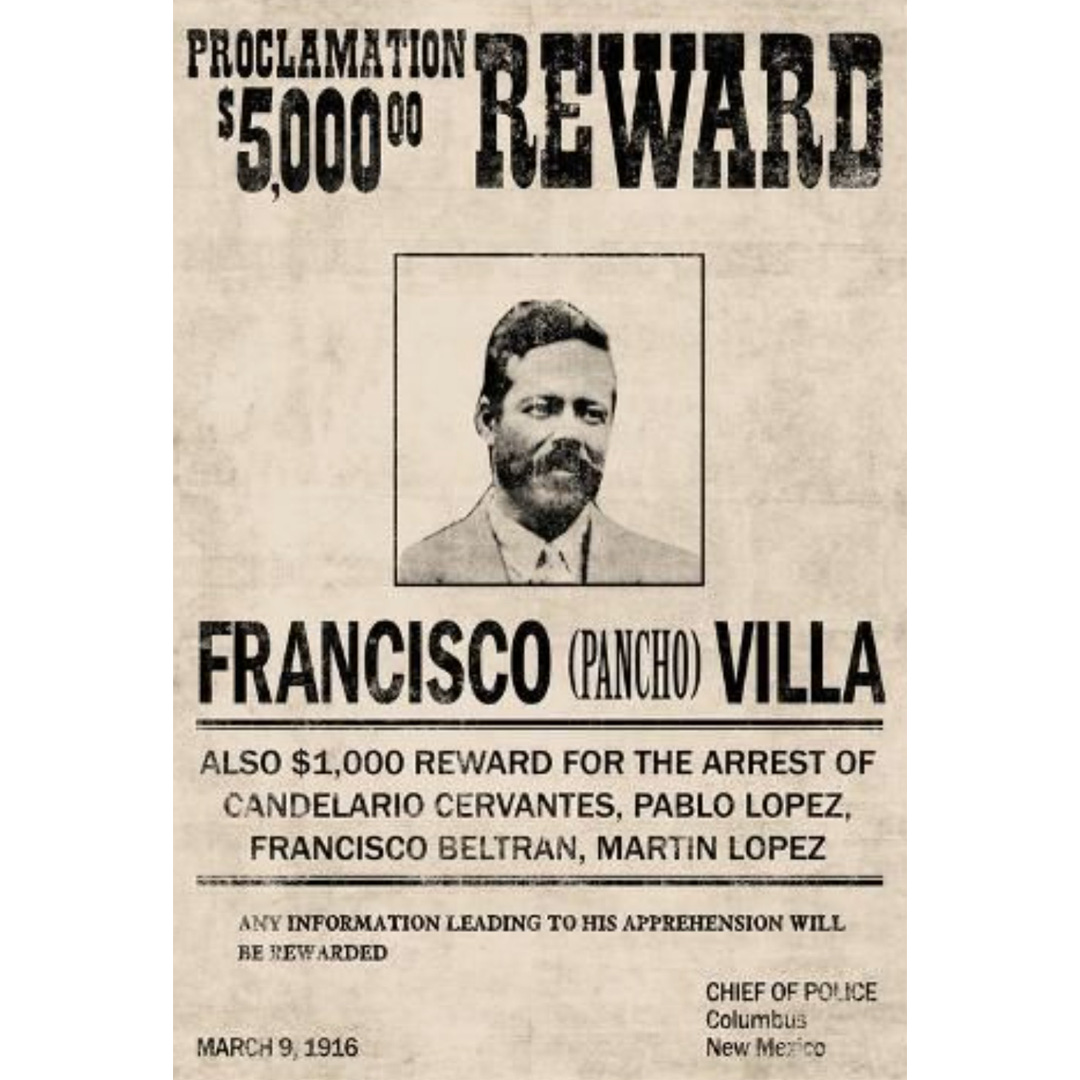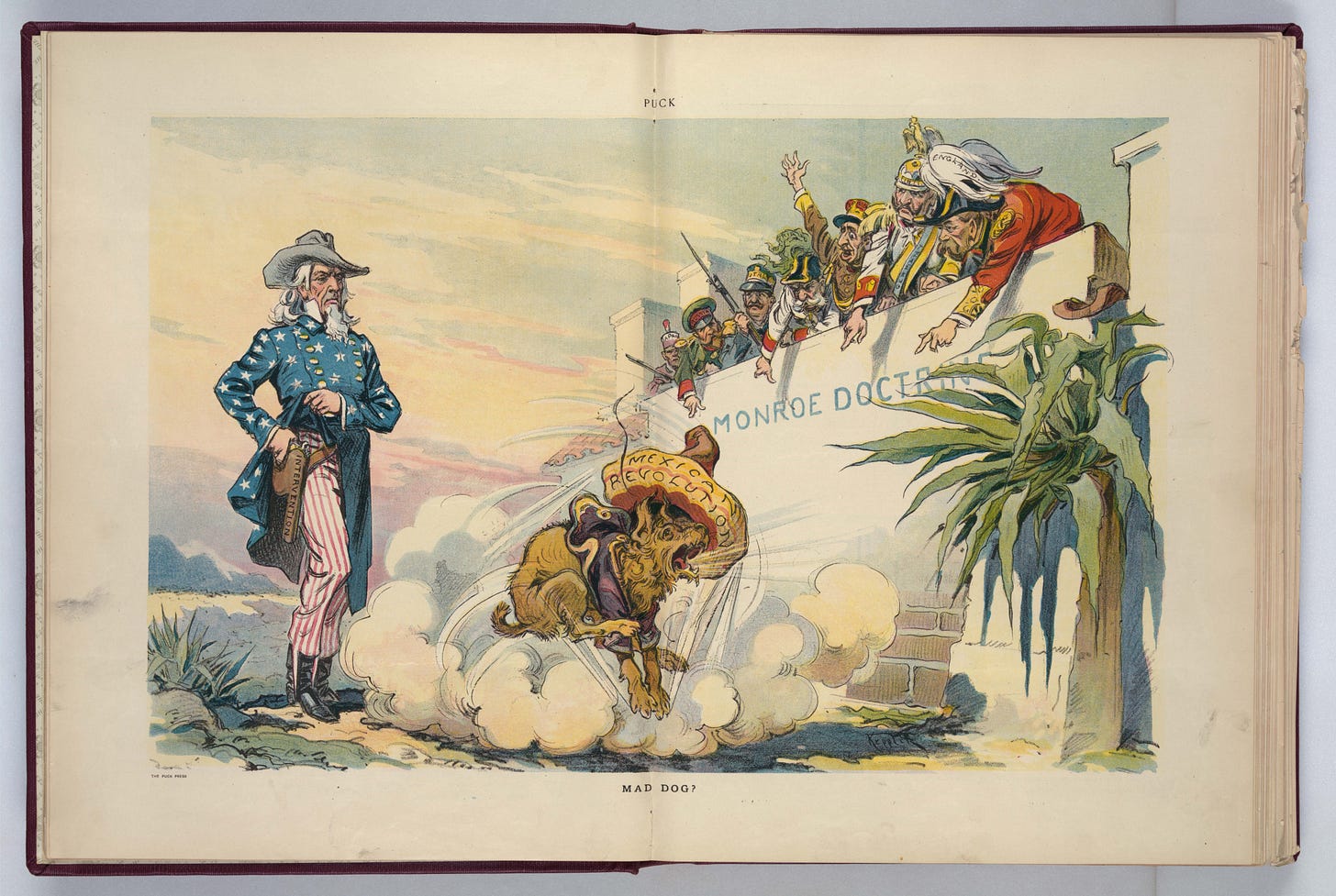15 Aug 25 | U.S. threatens military interventions, again
Also in the edition: The Huarache vs The Vampire Adidas. Mexico City gets rains not seen in 70 years. Farewell to Eddie Palmieri, “our Beethoven.” Breathing life into the soul of Rosario Castellanos.
Lea La Jornada Internacional en español aquí.

Echoes of the Monroe Doctrine
The last time the United States deployed military troops in Mexico was over 100 years ago, first in 1914, and again in 1916, under President Woodrow Wilson. But now, President Donald Trump is again threatening to unilaterally send troops into Mexico, evoking memories of the Monroe Doctrine. Although Barack Obama explicitly declared the end of that doctrine, the Trump administration is making it clear that, at least rhetorically, Monroe is back.
Trump signed a secret order instructing the Pentagon to use military force against drug cartels—which had already been designated as "terrorist organizations"—in various Latin American countries, including Mexico, Venezuela, Haiti, and El Salvador. Media outlets reported that the Pentagon is preparing military options, including the use of special forces, intelligence support, and targeting cartel leaders.
“The United States is not going to send its military into Mexico,” said President Claudia Sheinbaum. “U.S. agencies operating in Mexico are highly regulated. I believe we are the country with the most stringent rules for foreign agents.”
The last time the United States launched a unilateral military action against Mexico was in 1914, when the U.S. Navy briefly occupied the port of Veracruz, and again in 1916, to pursue Pancho Villa after he dared to become the first Latin American to intervene in the U.S. by attacking Columbus, New Mexico.
In an editorial, La Jornada writes: “It is clear that labeling cartels as terrorist organizations and issuing orders for military operations against them is a threat to any country that defends its sovereignty against U.S. interventionism… That’s why Latin American and Caribbean unity is essential for mutual protection and to reject Washington’s obsession with controlling the region's destiny.”
But it’s unclear whether Mexico is the main target of Trump’s policy, or if the order is intended to prepare for new actions against other countries like Venezuela. “U.S. policy could now consider military force under certain conditions,” explained retired Colonel Craig Deare, former military attaché at the U.S. Embassy in Mexico during the 1990s. “The case of [Nicolás] Maduro’s regime in Venezuela could be one of them.”
Several analysts recall that a relevant precedent is the U.S. military intervention in Panama in 1989—“Operation Just Cause”—in which Washington captured the de facto leader General Manuel Noriega. Colonel Deare notes that “recent comments by Attorney General Pam Bondi labeling Maduro as ‘one of the biggest drug traffickers in the world and a threat to our national security’ may be setting the stage for military action.
In Mexico’s case, the most likely outcome is that this threat of U.S. military force will be used to pressure for greater cooperation between the Mexican military and U.S. agencies like the DEA, CIA, and others, according to Professor Aileen Teague of Texas A&M University. In an interview with La Jornada, she noted that since the Reagan administration, the U.S. has repeatedly threatened to use military force in Mexico. She concludes that, for now, the shift is rhetorical rather than actions in the U.S. anti-drug policy toward Mexico.
And the pressure seems to be yielding results, she says. Last Tuesday, the Mexican government handed over 26 members of organized crime to U.S. authorities. This was the second large transfer of traffickers to the U.S.—the first took place in late February, when 29 inmates were expelled, including Rafael Caro Quintero.
The Quote:
Art, above all, has the duty to be art.
-Rosario Castellanos
In Case You Missed It:

◻️ Rescuing a Mexican muralist. The memory and works of Saturnino Herrán, a pioneer of Mexican muralism, are once again on display in Mexico. His piece The Legend of the Volcanoes was the first to portray the Mexican body as it truly is. It had been hidden due to its content.
◻️ The huarache stomps on the vampire Adidas. When Adidas tried to appropriate the huarache design, “Yalálag wouldn’t allow it—because it never has,” writes Luis Hernández Navarro. He tells the century-old story of these unique Oaxacan sandals. Adidas promoted its “Oaxaca Slip On,” claiming it was “inspired” by the Zapotec huarache. Mexico’s Ministry of Culture and the National Institute of Indigenous Peoples protested the cultural appropriation. Adidas has since apologized and is working with Oaxacan authorities to resolve the issue.
◻️ 13.4 million. That’s the number of Mexicans who exited poverty between 2018 and 2024. In 2024, 38.5 million people were living in poverty, down from 51.9 million in 2018, according to Mexico’s National Institute of Statistics and Geography.
◻️ Gender-Based Violence: A Silent Pandemic in Latin America. Feminists declared that gender violence remains a silent pandemic in the region during the lead-up to the 16th Regional Conference on Women in Latin America and the Caribbean. They criticized the “criminalization of human rights defenders” and the growing “wave of wars, conflicts, and humanitarian crises,” which disproportionately affect women and girls. In Mexico, feminists pointed to problems such as lack of access to safe abortion and the gender pay gap—Mexican women earn up to 34.2% less than men. “Women who bear the burden of unpaid care work deserve policies that recognize, redistribute, and compensate care as a public good,” said Sima Bahous, Deputy Secretary-General of UN Women. ▶️VIDEO: The History of Feminism in Mexico
◻️ Mexico City: Rains Not Seen in 70 Years. “We break a record every day. We always think this is the heaviest rain ever, and the next day it gets worse,” said Mayor Clara Brugada. This month brought the most intense rainfall in the north-central area since 1952. La Jornada attributes this to 500 years of errors.
◻️ “Our Beethoven Is Gone”. In his column Tumbando caña, Ernesto Márquez writes: Eddie Palmieri “was the most restless, the most studious, the most joyful, the boldest, the greatest, and his physical departure has shaken the world, the music scene, and all who were touched by his art and example.” Pianist Richie Ray added, “Our Beethoven is gone.”
◻️ South Park Season 27. The new season tackles two targets: the physical ugliness of its villains—Trump—and in episode two, the face of ICE, Kristi Noem, who melts several times in under half an hour. “The show’s ironic and harsh style fits perfectly with today’s U.S. political landscape,” writes Hernán Muleiro.
◻️ Breathing life Into Rosario Castellanos’s soul. This year marks the 100th birthday of Rosario Castellanos. The poet, novelist, and journalist holds a central place in Mexican culture, writes Hermann Bellinghausen. Several tributes and exhibits have honored her legacy. In one of them, author Elena Poniatowska spoke with Leticia Bonifaz, an expert on Castellanos’s life and work. For those in Mexico City, the exhibit A Sky Without Borders reveals a more intimate side of the author, as described by Emilio Payán. Historian Felipe Ávila discusses Castellanos as a pioneer of Mexican feminism. Scholar Flora Botton remembers her as a UNAM professor “with a fantastic sense of humor.”
⏯️ PODCAST: Rosario Castellanos, the Feminist We Didn't See. Actress Luisa Huertas shares her experience embodying the writer.







